Everything you need to know about what to eat on a low carb or keto diet is covered in this article. All of your questions about low carb foods are answered in this comprehensive guide to the greatest low-carb foods, as well as our best advice for low-carb diet success.
Grab a cup of coffee or a snack, settle in, and start reading! You’ll learn a lot and be inspired!
Disclaimer: This article is not meant to be a substitute for professional medical advice. You may not be a good candidate for a low-carb diet. Use this information at your own risk or see your doctor before making any lifestyle changes.
Foods and Beverages in Low Carb Foods
Starting with what you can and cannot consume on a low-carb diet, we’ll go over the basics. If you’re accustomed to eating bread, pasta, rice, and potatoes with every meal, low-carb diets can throw you for a loop. The good news is that low-carb dieters can enjoy a wide variety of delicious and nutritious foods and beverages.
Foods That Are Low in Carbs
- Non-Starchy Vegetables such as spaghetti, arugula, arugula sprouts or micro-greens; spinach; broccoli; cauliflower; cabbage; zucchini; summer squash; artichokes; onions; mushrooms; cucumbers; celery; bell peppers; tomatoes; and sprouts or micro-greens.
- Natural fats such as extra virgin olive oil, unsweetened coconut oil, butter from grass-fed cows, ghee, avocados, and the butters from nuts.
- Nuts and seeds that can be used in this recipe, including walnuts, almonds, macadamia nuts, and other types of nut.
- Foods that have been raised naturally and/or fished in the wild.
- Lactose-free yogurt, low-carb cheeses, full-fat natural or Greek yogurt, full-fat or heavy cream, and dairy from goats or sheep.
- Blueberries, blackberries, raspberries, strawberries, cherries, pears, peaches, and melons are examples of low-carb fruits that can be eaten in moderation.
Low Carb Drinks
- If you are a woman, you should strive to drink 2-3 liters of water per day, whereas men should drink 3-4 liters per day. Adding a squeeze of lemon or lime or these simple calorie-free, carb-free crystallized citrus packets from True Citrus will improve the taste of your water. Other fresh, natural flavor alternatives include cucumbers, melon, and berries.
- Low-carb dieters can enjoy black coffee or coffee sweetened with stevia or another sugar alternative. Blending coconut oil, MCT oil, grass-fed butter and/or ghee into your morning cup of coffee is another way to experiment with bulletproof coffee recipes.
- In the same way that you can have a cup of coffee without sugar, you can have a cup of tea without sugar, as well. On our website, you can also purchase unsweetened and dairy-free creamers!
- Explore sugar-free iced teas, cola, energy drinks, and more on our website that you can have on a low-carbohydrate diet. A good alternative to sodas, teas and other cold beverages is a non-nutritious beverage called a “healthy iced beverage.” You may fulfill your appetites without the negative effects of conventional sugar-laden drinks if you wish to stop a bad habit with these solutions.
Low Carb Foods to Avoid
Sugars
If you’re trying to stick to a low carb diet, you’ll want to steer clear of both natural and unnatural/processed/refined sources of sugar. Obesity, inflammation, diabetes, cardiovascular disease, neurological disorders, and other illnesses are all made worse by sugar’s high carbohydrate content as well as its role in the development of these and other major health problems. This is due to the fact that sugar is low in nutrients and rich in calories. Sugars are quickly depleted in the body, making you need more and more of the sweet stuff. A diet low in nutritional value can lead to weight gain, whereas a diet high in calories can have the opposite effect. A chain reaction of chemical events in the body is also triggered when sugar is consumed, resulting in poor metabolic function, hormone imbalances, cognitive impairment, and a lack of self-control and restraint.
Even if you only eliminate refined sugars from your diet, your health will benefit substantially from a low-carbohydrate one.
Starches
On a low-carb or ketogenic diet, starches, particularly refined starches, are another type of carbohydrate to avoid. Whole grains, legumes, and root vegetables are all natural sources of starch. As a result of their processing, refined starches are stripped of many of the key nutrients that would otherwise be present in their original whole food state.
As a result of their lack of nutritional value and high caloric content, processed carbohydrates are referred to as “empty carbs.” In other words, if you’re following a low-carb diet, you should stay away from starches like those found in conventional bread, tortillas and wraps, bagels, pasta, instant rice, potato chips and crackers, cookies and cake. A low carb, refined starch-free alternative is available on our website if you choose to avoid these carbs altogether.
Brown or wild rice, oats, beans, chickpeas, lentils, potatoes, beets, parsnips, and carrots are other healthy starches that may or may not fit into your specific low carb diet. Keep reading to learn about the various low-carb diets and speak with your doctor to establish how much carbohydrates you should eat.
Tips for a Low Carb Foods
We’ve compiled some of our finest advice for getting started on a low-carb or ketogenic diet below. Here are some things to consider before starting, as well as some tips that could help.
Nutrition Labels: How to Interpret Them
In order to begin a low carbohydrate diet, or any diet, you must be familiar with the fundamentals of reading nutrition labels. Ketogenic diets, for example, necessitate meticulous tally-keeping of the grams of carbs, protein, and fat consumed throughout the day. Understanding how to read nutrition labels is an important first step in determining your daily macronutrient ratios, since it will help you determine what’s in your food and how much of it there is. You’ll also learn how to recognize sugars that aren’t readily apparent on food packaging labels, which is a valuable skill to have.
You’ll need to pay attention to two primary areas of nutrition labels:
-
Table of Nutritional Values
The Nutrition Facts table provides information on the calorie, fat, carbohydrate, and protein content of the items you consume. Next, we’ll take a look at each of the following groups:
Calories
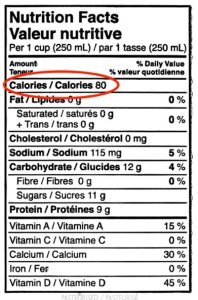 Many people are unsure if a low-carb or ketogenic diet necessitates calorie counting. The answer is that it is dependent on a variety of factors. It’s possible that keeping track of your caloric intake will be helpful if your objective is to slim down. A caloric deficit is required in order to lose weight, which means that the amount of calories you burn each day (either via natural metabolic processes or through exercise) must exceed the number of calories you ingest each day.
Many people are unsure if a low-carb or ketogenic diet necessitates calorie counting. The answer is that it is dependent on a variety of factors. It’s possible that keeping track of your caloric intake will be helpful if your objective is to slim down. A caloric deficit is required in order to lose weight, which means that the amount of calories you burn each day (either via natural metabolic processes or through exercise) must exceed the number of calories you ingest each day.
Being in ketosis has been shown to greatly increase your metabolism and help you to burn an additional 300 calories per day without making any other lifestyle changes [*]. When you’re in ketosis, your body is already burning fat from your food, making it easier to burn stored fat. If you have a surplus of fat that your body can use for energy, this can aid in weight loss. So, the good news is that with ketogenic diets, you may not have to count or restrict calories like you would with other diets!
If your primary objective is to improve your health or manage a medical condition like type 2 diabetes, or if you want to experience any of the other benefits of ketosis (which we’ll discuss in more detail soon! ), then calorie monitoring is not necessary when following a low carb diet.
Fat
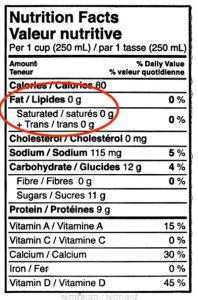 If you’re on a ketogenic diet, you’ll want to be sure you’re getting enough fat from your diet to keep your body in ketosis.
If you’re on a ketogenic diet, you’ll want to be sure you’re getting enough fat from your diet to keep your body in ketosis.
The amount of fat in a food item is listed below the number of calories near the top of a nutrition facts table. When it comes to fats in food, it is typically divided down into the many types of fats, such as saturated and trans fats. Generally speaking, these are the fats that most health experts recommend limiting. This isn’t how things work in reality. While some types of saturated fats, such as coconut oil, are better than others, those from animal sources can be more harmful to your health than those from plant sources. This means that you should check the ingredients list if you find saturated fats included in the nutrition data. Saturated fats are discussed in depth in our article on How to Choose the Right Fats.
They’re more black and white with trans fats. Because trans fats are closely connected to an elevated risk of cardiovascular disease and other major health concerns, they should be avoided or minimized in your diet. Foods prepared with hydrogenated or refined oils are a major source of trans fats, which are present in minor levels in most animal products. Fried items, as well as baked products, margarine, microwave popcorn, and frozen or refrigerated dough, are included in this category (pizza, biscuits, rolls, etc.).
There are several nutrition data tables that don’t indicate the sorts of fats we should be eating! Polyunsaturated and monounsaturated fats are among them. If you’re looking to increase your intake of the “good” fats, you’ll need to do some more study to find out which foods contain them. Additional materials are available on our site to help you better understand the difference between healthy and bad fats.
Omega-3 and omega-6 fatty acid content can occasionally be shown on nutrition information tables. Consume foods high in omega-3 fatty acids, such as chia seeds, flaxseeds, and fatty fish, in order to reduce your risk of heart disease. Inflammation and heart health have been linked to a diet high in omega-3 fatty acids.[*].
Carbohydrates
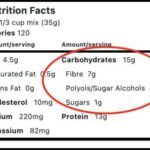 If you’re following a low-carbohydrate diet of any kind, you should keep track of how much total and net carbohydrates you consume each day.
If you’re following a low-carbohydrate diet of any kind, you should keep track of how much total and net carbohydrates you consume each day.
Nutrition facts charts list total carbohydrates in the middle of the table. It is important to know your total carbohydrate intake in order to determine your daily macronutrient ratios, even if most low carb dieters focus on net carbs. In order to follow a low carb diet, you need to consume no more than 50 grams of carbohydrates daily. When on a low-carb diet, it is net carbs that count.
It is important to keep your intake of net carbs to a minimum because they have an impact on your metabolic process and blood sugar levels. Take the overall carbohydrate content, adjust for portion sizes, and deduct any fiber and sugar alcohols that are mentioned below the total carbohydrate quantity. You can then calculate your net carb amount.” These are not included in the overall carb count because they have no effect on your blood sugar levels or metabolic state. So, what are you left with?
Despite the fact that fiber is technically a carbohydrate, it should not be restricted on a low-carb diet. As a result, don’t be concerned if it raises your daily carb intake. Like sugar alcohols, which taste sweet but have a low glycemic index, many low-carb alternatives use sugar alcohols in place of the original sweetener. It’s possible that you may get stomach discomfort if you eat too many foods containing sugar alcohols, so be cautious.
Protein
 Finally, you’ll want to evaluate the protein content of the food you’re putting into your body. Getting into ketosis can be difficult if you only consider carbs and fats. Your body’s ability to enter ketosis may be impeded by the conversion of extra protein into glucose, which occurs when the body uses up all of its protein stores. So the ketogenic diet seeks to limit your protein intake to 15%-25% of your daily calorie intake. Having said that, you shouldn’t avoid protein totally because it is necessary to keep you full and to help you gain muscle mass while following a ketogenic diet.
Finally, you’ll want to evaluate the protein content of the food you’re putting into your body. Getting into ketosis can be difficult if you only consider carbs and fats. Your body’s ability to enter ketosis may be impeded by the conversion of extra protein into glucose, which occurs when the body uses up all of its protein stores. So the ketogenic diet seeks to limit your protein intake to 15%-25% of your daily calorie intake. Having said that, you shouldn’t avoid protein totally because it is necessary to keep you full and to help you gain muscle mass while following a ketogenic diet.
2. List of Ingredients
There’s more to it than just the figures! It is just as important to consume high-quality meals as it is to consume large quantities. Verify the ingredient lists on all packaged foods you consume to confirm that they are created from primarily identifiable ingredients. Always check the ingredients list. Keep an eye out for foods that may appear to be low in calories and carbs, but may actually be harmful to your health, such as artificial sweeteners. Sucralose, maltitol, aspartame, and saccharin are just a handful of the many names for these sweeteners. A simple Google search will answer any questions you may have about an ingredient on a food label.
Keep an eye out for the following other common ingredients and stay clear from them:
- Foods that have been “tweaked”
- These oils are referred to as “hydrogenated” (AKA trans fats)
- Palm oil, canola/rapeseed, and corn oils are all refined vegetable and seed oils.
- Flavors and colors synthesized in a lab
- Additives such nitrates and nitrotites, sulphites, sodium benzoate and disodium phosphate, among others.
As a general rule, stay away from anything that contains sugar of any kind. Sugar can be referred to as high fructose corn syrup, beet syrup, dextrose, maltose, or sucrose, among others. Honey, maple syrup, date sugar, and unrefined coconut sugar are all examples of unprocessed sugars that may be allowed as part of a low carbohydrate diet.
Visit our blog for a comprehensive guide on reading Canadian nutrition labels.
Products That Aren’t Low Carb Foods
Careful diets necessitate special attention to product labeling. The use of certain buzz words on food labels, such as Certified Organic, Certified Gluten-Free, and OU Kosher, is strictly restricted in Canada and the United States.
Products that claim to be “keto-friendly” or have a low net carbohydrate content “per serving” are widely available (which may be smaller than you expect). Use the insights we’ve offered about reading nutrition data and ingredient lists to decide whether the products you’re purchasing are genuinely acceptable for your low-carbohydrate eating plan Foods that are Grain-Free, Paleo Certified or Keto Certified by the Paleo Foundation are likely to meet the requirements of many Paleo dieters. Check out their website to learn more about their certification requirements!
Festivities and Low-Carbohydrate Meals
You don’t have to give up your social life just because you’ve begun a low carb or ketogenic diet! Even if you’re on a strict low-carb diet, you don’t have to give up wonderful low-carb desserts or even the occasional cocktail.
Restaurants
Starting a low carb diet can make going out to eat for the first time feel a little daunting. Here are a few things to keep in mind the next time you’re dining out.
- Carbohydrates should be kept to a minimum in any other meals you have that day at home. Unless you’re ordering off a menu, you have no way of knowing exactly what’s in your dish or what the macronutrient proportions are. Accept the possibility that you may go over your typical carbohydrate allotment during your meal at the restaurant, or prepare ahead of time by reducing carbs in your other meals and snacks that day.
- Bread is unnecessary. Bread at the beginning of the meal is almost always off limits unless you’re in a keto-friendly establishment. Start with an olive or cheese plate if you’d like!
- Make a side salad or sliced avocado instead of potatoes or rice for your carb-heavy side meals.
- Request the dressing to be placed in a separate container. Fruit purees or additional sugars are common ingredients in salad dressings. Ask your server if they know what the dressing is comprised of before dousing your salad in it.
- Portion control for protein should be a priority. Meat is frequently the star ingredient in dishes at restaurants. However, as we previously stated, going over your daily protein limit can cause you to exit ketosis. Smaller servings of proteins are preferable, but if that isn’t an option, don’t eat the entire portion that is served to you.
- Increase the fat level of your food by requesting additional olive oil or butter. You can get one of these ingredients for free at most restaurants if they have it on hand. Adding olive oil to your salad or sprinkling a bit of butter on your steak will help you stay on track with your macronutrient intake.
- End your meal with a cup of coffee or tea instead of dessert. If the restaurant you’re at only serves sugar or artificial sweeteners, having a few sachets of natural sweetener on hand is a smart move (Splenda, Sweet & Low, etc.).
Alcohol
 While on a low carb diet, it’s especially important to monitor your alcohol intake for a few reasons. There are many reasons why alcoholic beverages are dubbed “empty calories,” but the most common is that they are high in sugar and poor in fat, protein, and other nutrients. People who are trying to reduce weight tend to steer clear of alcoholic beverages, such as beer and wine. Behavioral impacts of alcohol, such as sleep deprivation and overeating or late-night snacking, are detrimental to a healthy lifestyle.
While on a low carb diet, it’s especially important to monitor your alcohol intake for a few reasons. There are many reasons why alcoholic beverages are dubbed “empty calories,” but the most common is that they are high in sugar and poor in fat, protein, and other nutrients. People who are trying to reduce weight tend to steer clear of alcoholic beverages, such as beer and wine. Behavioral impacts of alcohol, such as sleep deprivation and overeating or late-night snacking, are detrimental to a healthy lifestyle.
Drinking excessive amounts of alcohol might have a negative impact on your health and weight loss goals. Liver disease, hypertension, poor cardiovascular health, digestive issues, and brain impairment in middle- and older-aged persons are only some of the side effects.
On a low-carb diet, the changes in your metabolism brought about by ketosis are the final reason to avoid alcohol. The body’s ability to metabolize alcohol is aided by consuming carbs. In contrast, on a ketogenic diet, there is no carbohydrate in your system, which means that alcohol can enter your system considerably more quickly. A few cents saved at the bar isn’t worth the risk of alcohol poisoning, which can cause vomiting, convulsions, or even coma.
With that stated, there are still ways to have a drink or two on a low carb diet! On our site, you may find information on how to drink alcohol while on a low-carb or ketogenic diet. On top of that, we’ve got a wide variety of sugarless and low-carb cocktail mixers for you to choose from, like Baja Bob’s Sugar-Free Margarita Mixers, Chase Keto-Friendly Flavour Droppers, and many more!
Holidays
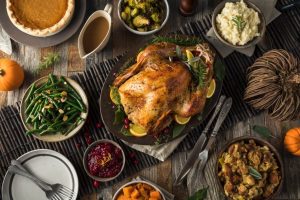 If you’re contemplating a low-carbohydrate diet, you should keep in mind the upcoming holidays. Everyone wants to enjoy time with family and make wonderful memories, but there are two possibilities for low carb dieters who want to do so without sacrificing these things. Take a look at these simple and non-intrusive low-carb holiday meal plans and determine whether or not the holidays will count as part of your dietary or lifestyle adjustments! The answer to that question is, “No one knows.” At the next family gathering, you may not be the only one experimenting with a new diet – you may even inspire someone else to do the same thing.
If you’re contemplating a low-carbohydrate diet, you should keep in mind the upcoming holidays. Everyone wants to enjoy time with family and make wonderful memories, but there are two possibilities for low carb dieters who want to do so without sacrificing these things. Take a look at these simple and non-intrusive low-carb holiday meal plans and determine whether or not the holidays will count as part of your dietary or lifestyle adjustments! The answer to that question is, “No one knows.” At the next family gathering, you may not be the only one experimenting with a new diet – you may even inspire someone else to do the same thing.
Tips for a Low-Carb Foods
The “whole foods” method
If you’re going to stick to a low-carb or ketogenic diet, it’s important to stick to entire foods. Whole, unprocessed foods, such as fresh low-carb vegetables and fruits, meat and seafood, eggs, natural dairy products, nuts, seeds, healthy cooking oils, and fresh herbs and spices, are the primary sources of nutrition in this approach. This strategy emphasizes the preparation of meals at home rather than relying on prepared foods, restaurants, or food delivery services. There are less foods to worry about since you know exactly what is in your diet, and you can automatically cut out several that are bad for your health and weight loss.
You can find a wide variety of low-carb, whole-food recipes for the whole family on our site, which includes modification recommendations. Additionally, you may buy for cooking and baking aids like low carb flour substitutes, low carb thickening agents, healthy cooking oils and more on our website.
Low-Carbohydrate Options
In order to follow a low-carbohydrate diet, several foods must be restricted or eliminated from one’s daily diet. However, thanks to the growing popularity of low-carb diets, you don’t have to give up all of your favorite meals if you want to lose weight!
Pasta, bread, bagels, cookies, and other sweets can now be enjoyed in a low-carb or ketogenic fashion. See what you can eat in place of some of these other high-carbohydrate options.
Noodles And Pasta
 You won’t find spaghetti and noodles on most diet-approved meal lists because they aren’t very nutrient-dense and they can easily add up to a lot of calories. With the appropriate substitutions, spaghetti and noodles can still be enjoyed on a low-carb diet! Here are a few of our favorite low-carb and ketogenic diet pasta and noodle swaps:
You won’t find spaghetti and noodles on most diet-approved meal lists because they aren’t very nutrient-dense and they can easily add up to a lot of calories. With the appropriate substitutions, spaghetti and noodles can still be enjoyed on a low-carb diet! Here are a few of our favorite low-carb and ketogenic diet pasta and noodle swaps:
- Sliced veggies like zucchini, summer squash, broccoli stems and cucumbers are all examples of this type of dish.
- A type of noodle created from konjac root. Our article “Exploring the Benefits of Konjac” will introduce you to one of the most popular low-carb diet staples: konjac. Spaghetti, angel hair, fettuccine, and many more shapes are available.
- Kelp noodles are good for both you and the environment. Seaweeds like kelp are rich sources of iodine, a mineral that is found in abundance in saline water. They’re also low in carbs and calories, which is an added bonus. Did you know that marine plants such as kelp and other seaweeds produce more oxygen than trees do?
- Cook two spaghetti-like portions of spaghetti squash by cutting it in half and roasting it at 350 degrees for 30-40 minutes, depending on how soft you like your squash.
If you use any of these substitutions, you can still enjoy low-carb Italian, Thai, and Chinese cuisines without sacrificing taste!
Rice
If you’re on a low-carb diet, rice is another starchy meal that you’ll want to minimize or completely avoid. If you’re looking for something that’s a little less caloric than white or quick rice, try brown or wild rice. To mimic rice’s texture and absorbency, try one of these low-carb alternatives:
- Riced cauliflower is a common low-carb rice substitute. Cauliflower rice! Using a food processor or a knife, finely chop the cauliflower before adding it to the dish. Tenderize the parts in a frying pan, and you’ve got a quick and easy rice alternative in no time! Unlike rice, cauliflower rice has a mild flavor and resembles cooked rice in terms of both texture and appearance. It’s also significantly lower in calories and fiber than rice, which means you’ll feel fuller for longer, and you won’t have to eat as much of it!
- It’s possible to rice other vegetables in a manner that’s quite close to rice, like cauliflower. For a change of pace, try risottoing broccoli, turnip, cabbage, or mushrooms!
- Shirataki Rice – konjac root-based foods are endless in their variety of uses. This low-carb, low-calorie vegetable’s fiber can also be molded into rice-like pieces. Because of this, we encourage you to try shirataki rice in addition to shirataki pasta and noodles!
- Palms’ hearts Natural, plant-based rice from Palmini and Natural Heaven — low in carbs, low in calories, and high in fiber!
- Goodbye Carb High Protein If you’re not strictly following a ketogenic diet, but still want a substantial amount of protein, Nutriwell Rice is a great option. It’s a lot better choice for your diet than plain rice because it keeps you full and satisfied longer.
Potatoes
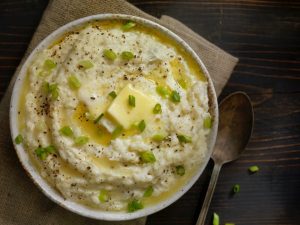 If you’re accustomed to eating meat and potatoes, you may be wondering what to substitute potatoes for on a low-carb diet! Since potatoes aren’t the only option, there are many different veggies that can stand in for them in a variety of potato-based meals. Some of these may be new to you, but you can get them at most supermarkets. On our blog, you’ll find seven great potato substitutes!
If you’re accustomed to eating meat and potatoes, you may be wondering what to substitute potatoes for on a low-carb diet! Since potatoes aren’t the only option, there are many different veggies that can stand in for them in a variety of potato-based meals. Some of these may be new to you, but you can get them at most supermarkets. On our blog, you’ll find seven great potato substitutes!
Breads
Fortunately, bread is one of the few foods you can enjoy on a low-carb diet. There are many of low carb and keto breads available that toast and taste like regular bread, even if you can’t eat traditional bread. In addition to being low in carbs, several of these low carb breads are also high in fiber, healthy fats, and can even be consumed by those with gluten intolerance.
Our favorite low-carb and keto bread brands are listed below:
- You can use these buns to make sandwiches, hamburgers, croutons, or even French toast! They’re all grain free and certified as Keto-Friendly. They are rich with nutrients and have a great macronutrient ratio because they are made with almonds, chia seeds, extra virgin olive oil, and eggs.
- If you combine gluten-free baking with low carbohydrate principles, you get what we call Slice of Life Carb Wise Bread! A low-carb loaf of bread may be wonderful, whether you believe it or not. Like many low carb goods, Slice of Life Carb Wise Bread was created out of necessity after the proprietor learned he was gluten-intolerant. For the past decade, Slice of Life Carb Wise Bread has helped countless people overcome their gluten intolerance and enjoy their favorite foods again.
- GluteNull Bakery Keto Buns — a new range of three keto-friendly buns from the company’s experts in gluten-free baking! Choose from one of three wholesome and delicious buns made with low-carb, vegan, paleo, and keto-friendly ingredients. If you’re looking for a healthier option, try the 25-gram-per-bun Almond Fatty Buns with golden flaxseed, or the decadent Coconut Ciabatta Bread!
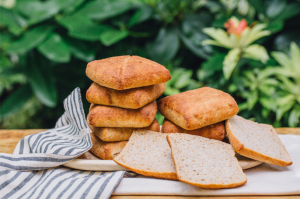 Low-carb and keto diets aren’t the only ones that allow you to create your own bread. It’s a lot easier than it appears, and there are a ton of quick and easy recipes available online! Many of the ingredients may be found in your kitchen cabinet, including an olive oil or coconut butter and a low-carb binding agent (xanthan gum) to keep the dough together. If you can’t find a low-carb or keto-friendly bread in the freezer section, you can still enjoy a warm slice of freshly baked bread by making your own at home.
Low-carb and keto diets aren’t the only ones that allow you to create your own bread. It’s a lot easier than it appears, and there are a ton of quick and easy recipes available online! Many of the ingredients may be found in your kitchen cabinet, including an olive oil or coconut butter and a low-carb binding agent (xanthan gum) to keep the dough together. If you can’t find a low-carb or keto-friendly bread in the freezer section, you can still enjoy a warm slice of freshly baked bread by making your own at home.
We have a variety of pre-made low carb bread mixes on our website if you don’t feel confident baking from scratch, such as HoldTheCarbs Keto Bread Mix or Home Grown Living Foods Pumpkin Chia Bread Mix or KZ Clean Eating Grain-Free Protein Bread Mix. It’s as simple as putting the wet ingredients into these dry mixes, baking them, and savoring the result!
Keto Diet: How to Eat Enough Fat?
It’s not enough to simply limit or replace carbohydrates on a ketogenic diet; you also need to ensure that you’re getting enough fat to maintain ketosis! You’ll begin to burn fat as soon as your body’s glucose supplies are low. Fat-adaptation, which helps the body to become more efficient at burning fat, is necessary even if you have reserves of fat in your body.
Fats should account for at least 70% of your daily caloric intake when following a ketogenic diet. Even if you’ve been eating a high-carb, high-sugar Western diet, this can be a lot of fat at first. Keto dieting is straightforward once you learn what you can and cannot eat on a low carbohydrate diet. The best foods for a keto diet can be found on our blog.
Meanwhile, here are some ways to increase your daily fat intake:.
- Eat a lot of high-fat snacks such as cheese and nut butters, as well as sugar-free dark chocolate.
- Coffee and smoothies can benefit from the addition of MCT oil or coconut oil, both of which are quickly turned into ketones.
- Every meal should be topped off with a few drops of extra virgin olive oil. Extra virgin olive oil, flaxseed oil, avocado oil, and macadamia nut oil are all excellent sources of omega-3 fatty acids.
- If you’re looking for a way to boost your intake of healthy fats, consider adding chia seeds, flax seeds, and hemp seeds to your diet! Omega-3 fatty acids, antioxidants, vitamins, and minerals are all found in abundance in these seeds.
- It is a great way to add crunch and flavor to any food, as well as an excellent substitute for breadcrumbs.
- Sliced avocado can be served as a side dish with your meals. Omega-3 and omega-6 fatty acids are found in abundance in avocados. The creamy texture makes them a wonderful addition to any meal or snack!
If you’re interested in finding out more about how to acquire enough fat on a ketogenic diet, check out our blog!
Benefits of Ketosis
 Now that you have a fairly solid idea of how to go low carb or go into ketosis, you may be asking what happens next! There are various advantages of low carb and ketogenic diets, which may provide answers for a number of health conditions. Always talk to a health care practitioner first to establish whether a low carb diet is good for you, but in the meanwhile, check out some of the incredible advantages of being in ketosis!
Now that you have a fairly solid idea of how to go low carb or go into ketosis, you may be asking what happens next! There are various advantages of low carb and ketogenic diets, which may provide answers for a number of health conditions. Always talk to a health care practitioner first to establish whether a low carb diet is good for you, but in the meanwhile, check out some of the incredible advantages of being in ketosis!
-
Improved mental performance
Followers of low carb high fat (LCHF) diets such as the ketogenic diet commonly claim an improvement in mental concentration, alertness, and clarity. In fact, some individuals follow the ketogenic diet for this purpose alone. The improvement in mental performance reported when following a keto diet is due to the brain’s lessened need on glucose to operate and instead it’s usage of ketones, which offer more efficient and long-lasting fuel.
There is a prevalent misperception that the brain needs glucose from carbs to work. This is only true when ketones are not readily accessible. Carbs are essential for brain function because glucose is a fast-burning fuel source for the brain, which necessitates a steady supply of carbohydrates to operate. The brain runs out of energy when you miss a meal or don’t have time for a snack. This might lead to a foggy state. In contrast, after only a few days of eating an LCHF diet, the brain is able to function on ketones alone, which reduces fluctuations in hormone levels and blood sugar levels.
It is common for the first week or two of ketosis to cause some unpleasant side effects such as increased brain fog and weariness, but they typically subside after the body has completely converted into ketosis. As a therapy for brain illnesses including Alzheimer’s and Parkinson’s disease, ketogenic diets have proven so beneficial that they are now being examined as a possible alternative. [*]
-
A decrease in hunger and a decrease in sugar cravings
Consuming a lot of high-fat, caloric-dense meals results in a decreased desire to eat. While rice, potatoes, and bread may be re-ordered for additional servings, avocados and eggs are a different story. These foods keep you feeling full longer and provide you a steady supply of energy, so you don’t become as hungry in between meals. The “hunger hormone,” ghrelin, may be suppressed by some ketones, which may assist avoid overeating during meals[*].
On a low-carb diet, if you’re hungry between meals, you may not be getting enough protein or fat. You may be lacking in protein if you’re feeling particularly ravenous. All-natural, preservative and filler free beef jerky snacks are an excellent method to relieve hunger pangs. If you’re starting to have the munchies, you probably only need to increase your fat intake. Between meals, munch on some nuts, a high-fat bar, or a tasty, salty cheese cracker! In the event that nothing else works, consider increasing your intake of fiber. Because it takes a long time for fiber to break down, it aids in keeping you full between meals. Increase your intake of non-starchy veggies and other high-fiber foods like flaxseed, psyllium and chia seeds.
3. Pain alleviation
Inflammation is linked to pain. Sugar is inflammatory, and a high-sugar diet is one of the primary causes of chronic inflammation. Doctors often recommend cutting down sugar from a patient’s diet in order to alleviate their discomfort. Here’s what we know about the link between sugar consumption and pain:
Blood sugar levels increase when we ingest more sugar than our systems can tolerate. Glucose levels rise as well. Insulin resistance develops when the body’s insulin levels are too high and the hormone no longer has the ability to do its job. Excess sugars build up in the blood when insulin isn’t working properly, and this leads to diabetes. As a result of the accumulation of “free radical” particles in the body, our immune systems are prompted to respond with inflammation. Several chronic disorders, some of which are linked with chronic pain, may be brought on by continuous high levels of inflammation.
The good news is that being in ketosis may assist in reducing inflammation, which in turn can aid in the alleviation of discomfort. Using fat as an energy source instead of sugar breaks the loop we just outlined. As a bonus, ketosis offers additional advantages that may help alleviate pain-related inflammation. The region of the brain that processes pain is less active when the nervous system is less active. The body produces more adenosine, which helps to reduce inflammation, as it goes into ketosis. Beta-hydroxybutyrate (BHB), one of the three ketones that are produced during ketosis, was shown to inhibit immune system receptors associated to inflammation [*].
-
Anxiety and despair are lessened
Mental health advantages of the ketogenic diet include the reduction of sadness and anxiety. There are three basic reasons why this is the case:
- Increased amounts of neurotransmitters associated with pleasure. Anti-anxiety properties of BHB ketone have also been discovered, which are linked to the ketone’s ability to reduce inflammation in the body[*]. Ketosis also boosts the brain’s synthesis of GABA, a neurotransmitter. [*] GABA has been proven to have a role in anxiety disorders, and as a consequence, anxiety symptoms and stress reactions improve[*].
- Bra that’s both better and more comfortable
- Your Mood Is Affected By What You Eat! Ketones are a more efficient source of energy for the brain, as we previously said. Deficient brain energy generation is a major contributor to many mental health issues. This diet’s increased dependence on mitochondria to transform fat energy into usable fuel sources has been found to promote mitochondrial activity (“energy factories”) in brain cells[*].
- Antioxidant properties are powerful. The antioxidant glutathione, which guards our cells against oxidative stress, is upregulated on the ketogenic diet, according to research. One of the most common causes of mental illness is a buildup of oxidative stress (also known as inflammation) in the brain. Hence, the ketogenic diet may be a fantastic method to improve mental health by encouraging the formation of chemicals that reduce oxidative stress!
It is common for mental health issues to be caused by a complicated mix of circumstances. When it comes to improving one’s mental health, changing one’s diet alone may not be enough. To find out more, speak with a mental health practitioner.
5. Type 2 diabetes management is the fifth step
Individuals with type 2 diabetes or pre-diabetes have a major problem with insulin’s function in the body. When insulin levels are too low, it’s usually due to an insulin deficiency. Diabetics and prediabetics are at risk for more significant issues such heart disease, nerve damage in the brain and limbs, loss of eyesight and skin diseases, as well as renal disease as a result of the domino effect caused by this.
There are several benefits of adopting the ketogenic diet, such as stabilizing blood sugar levels and improving insulin function, that may help prevent and treat type 2 diabetes. The body is able to maintain low but healthy blood glucose levels by reducing or eliminating carbs from the diet and ingesting mostly high-fat meals.
Insulin resistance has also been observed to be more frequent in overweight people. Ketogenic diets may aid with weight reduction since they are effective for certain individuals. Type 2 diabetes may be managed by modifying one’s diet and/or decreasing weight, while others may need medication or insulin injections to keep their blood glucose levels in check. If you have type 2 diabetes or pre-diabetes, consult with your doctor about your treatment options.
6. Increased stability in energy levels
“Sugar highs” and “Sugar crashes” are common reactions to eating a diet high in carbs, particularly processed carbohydrates and sugar. The opposite is true when you follow a ketogenic diet and your body becomes fat acclimated. This means that your body has a constant supply of fat to burn, whether it’s stored as fat in your body or comes from food. In this way, you avoid energy dips in between meals and are able to push through your day without experiencing fatigue or hunger.
In addition to regulating blood sugar levels and promoting insulin activity, the keto diet also aids in this regard. Hunger, desires, and energy levels are all influenced by our blood sugar levels. When your blood sugar levels are regulated, you are less likely to feel fatigued or hungry after eating, which may be done with a ketogenic diet.
Because your body is still “searching” for carbs to burn, you may experience fluctuations in energy levels as you go from a carb-adapted condition to a fat-adapted one. The first 1-2 weeks of a keto diet may cause you to suffer sugar cravings, increased hunger, and energy changes. Ketones, on the other hand, assist curb appetite after you’ve become fat-adapted. The ability to skip meals like breakfast and lunch when on a ketogenic diet is made easier by this. For more information on this subject, keep reading!
-
Improved Sleep
 What You Eat Affects Your Sleep Quality.
What You Eat Affects Your Sleep Quality.
Many of the additional advantages stated above may have something to do with the fact that many individuals experience improved sleep when in ketosis. The reduced nerve system excitability that ketosis promotes means that you’re less likely to have sleep issues or problems falling asleep if you’re on a keto diet.
As a consequence of being in ketosis, increasing adenosine levels may also contribute to better sleep. Adenosine has been shown to lower inflammation in the body, as we discussed before. Reduced duration in REM and deep sleep, both of which are necessary for restorative sleep, is associated with higher levels of inflammation[*]. Adenosine is an important hormone in the regulation of sleep[*]. During the day, adenosine builds up and inhibits nerve cell activity, making us feel drowsy and ready for bed at the end of the day!
Ideas for Low-Carb and Keto-Friendly Recipes
That’s rather intriguing, don’t you think? If you’re curious in what you may consume on a ketogenic diet, check out this list. While there are many different recipes and meal plans to choose from, these are a good place to start if you’re unclear about what makes a low carb, moderate protein, high fat meal plan work or don’t.
A Breakfast of Low Carb
Low-carb and keto diets need a nutritious breakfast that is heavy in fats, protein, and fiber. It is important to have a balanced breakfast that includes a variety of nutrients to keep you full and minimize blood sugar increases after a long night of sleep.
You may want to start with a cup of bulletproof coffee to get you started! An excellent way to start the day on a ketogenic or intermittent fasting diet is with this smoothie. First thing in the morning, drink at least a cup or two of water to flush out any remaining toxins that may have accumulated over the night’s metabolism.
Bulletproof Coffee Making
Making Coffee and Tea How to Eat Low Carbohydrates The easiest way to create bulletproof coffee is to add a healthy fat source to your daily cup of joe before blending. Bulletproof coffee isn’t simply prepared with heavy cream or sugar-free creamer; it’s frequently made with grass-fed butter, ghee, or MCT oil! MCT oil is an excellent alternative for those following a ketogenic diet since the liver can rapidly and readily convert it to ketones, providing a fast burst of energy in the morning.
Here are some breakfast alternatives to consider when it’s time to eat:
- Avocado, cheese, almonds, and berries or fresh greens may all be combined to make a tasty spread.
- Nut butter, keto-friendly jam, or a low-carb cheese like brie or ricotta may be spread over a slice of low-carb bread.
- Vegetable- and herb-packed omelet topped with cheese and a serving of avocado or full-fat natural/Greek yogurt
- Churned keto chia seed pudding, sweetened with zero carb stevia or full-fat coconut milk, nuts, and chia seeds overnight. Add fresh berries and/or nuts for decoration. As a side dish or dessert, this is a great option.
- cereal or granola with milk (or plant-based option) or full fat natural/Greek yogurt for those following a ketogenic eating regimen.
Fasting Intermittently
A widespread habit among low-carb and keto dieters is intermittent fasting. Intermittent fasting and ketogenic diets have a same metabolic goal: to educate the body to burn fat for energy instead of sugar by depleting glucose reserves and reducing insulin levels in the body.
Our bodies naturally enter ketosis when we fast for long periods of time. If you’re looking for a way to make your body “fat adapted,” then intermittent fasting and a ketogenic diet may work well together. Those who are fat adapted may find that intermittent fasting is more tolerable on a ketogenic diet, since they are less likely to feel sleepy or hungry during fasting.
You should aim for a fasting window of 12-16 hours if you are on a low carb or ketogenic diet and want to practice intermittent fasting. This is because our bodies require 12-16 hours to achieve ketosis when they are fasted. It’s okay to finish eating at 8:00 pm and then have your next meal between the hours of 8:00 am and 12:00 pm the next day. Zero-calorie liquids such as water, tea, or black coffee may be had before your first meal. Sugar, creamers, and anything else containing calories should be avoided since this will break your fast.
Increased resilience to stress, enhanced cognition and longer life are just a few of the advantages of fasting. In fact, the advantages of the keto diet are considered to be so potent because they stimulate systems in the body that are comparable to those of fasting! You can find out more about intermittent fasting and alternate day fasting on our blog!
Foods That Are Low in Carbohydrate
 Low-carbohydrate diets don’t have to be devoid of flavor. You don’t have to give up your favorite lunch or supper items like sandwiches, spaghetti, and even pizza just because you’re trying to consume less carbs! However, if you’d want to try out some new, yet basic, dishes, here are some suggestions:
Low-carbohydrate diets don’t have to be devoid of flavor. You don’t have to give up your favorite lunch or supper items like sandwiches, spaghetti, and even pizza just because you’re trying to consume less carbs! However, if you’d want to try out some new, yet basic, dishes, here are some suggestions:
- If you’ve got the time and the inclination to make your own salad from scratch rather than buy pre-packaged or pre-smoked salmon at your supermarket, then this is the recipe for you!
- With either grilled chicken or tofu, you can make a delicious stir-fry of veggies. It is best served with a side of avocado and garnished with ginger, garlic, soy sauce, or coconut aminos (soy-free).
- Serving suggestion: Garlic-sour cream-yogurt sauce to dip your beef kabobs in.
- On its alone or with creamy cauliflower mash, this bean-free chilli is delicious.
- zucchini noodles with olive oil, garlic, salt and pepper seasoned chicken parmesan.
Side Dishes With Low Carbohydrate Content
Adding a side of greens to a low-carb dinner is always a smart option since they’re low in carbs and packed with fiber and minerals. Add garlic, salt, and pepper to the extra virgin olive oil to make them tastier. The vitamin C in lemon juice helps your body absorb the high iron concentration present in leafy greens, so don’t forget to add a last squeeze!
For a fast and simple approach to eat more vegetables with your meals you may offer roasted vegetables such bell peppers, mushrooms, broccoli, zucchini, Brussels sprouts and asparagus. In 20-30 minutes at 375 F, just cut your vegetables, season them, and roast them in the oven until they’re soft. Adding shredded cheese to the top and baking them for another 5 minutes gives them an additional dose of fat and flavor!
High-fat keto friendly side dishes include:
- Fresh mozzarella cheese, tomato slices, and a sprinkle of extra virgin olive oil are the main ingredients in this Caprese salad.
- Cucumbers, tomatoes, olives, and feta cheese make up this Greek salad.
- Almond flour and parmesan cheese (or these Italian-flavoured Nut Crumbs!), salt, and Italian seasoning are all that’s needed to make zucchini fries. cooked at 400 degrees Fahrenheit for around 20 minutes until they’re crispy!
- A low-carb version of garlic bread.
- Bone broth or low-carb soup.
Low Carb Foods Consumed As Snacks
 This is a perfect time to add additional fats to your diet by snacking! At lunchtime, instead of grabbing a bag of potato chips or a box of cookies, try a low carb high fat snack such as:
This is a perfect time to add additional fats to your diet by snacking! At lunchtime, instead of grabbing a bag of potato chips or a box of cookies, try a low carb high fat snack such as:
- Nuts like pecans, walnuts, almonds, and macadamia nuts are excellent for low-carb diets!
- If you want a snack that you can take with you wherever you go, go for low-carb crackers and cheese.
- MCT oil is used to make this fat smoothie.
- In order to get the maximum health advantages, choose for sugar-free dark chocolate (70 percent or more cacao).
- Fat bombs constructed from scratch (shop pre-made fat bombs, too).
- You can’t go wrong with any of them – a little handful of each.
- Toppings such as smoked salmon and cream cheese, mashed avocado and hard-boiled eggs, tomato sauce and cheddar cheese, or even nut butter may be added to this low-carb crispbread.
Here are some frequently asked questions about low-carb diets.
You may still have concerns about beginning a low-carb or ketogenic diet, even if we’ve covered most of the essentials. Learn the most common misconceptions about low-carb diets by reading our answers to the most often asked questions.
I’m following a low-carbohydrate diet; how many carbohydrates should I be eating?
It’s impossible to provide a definitive response to this issue as it relies on your own objectives and the recommendations of your doctor. To that end, the following are some general principles for calculating an appropriate carbohydrate intake:
- High-intensity exercisers should consume between 100 and 150 grams of protein each day. Carbohydrates like fruits, potatoes, and whole grains have plenty of place in this diet. Carbohydrates are essential for energy during exercise and for recuperation afterward.
- Slow and sustained weight reduction or weight maintenance may be achieved by consuming 50-100g of protein each day. First-time low-carb dieters and those who are transitioning from a low-carb diet find this to be a doable challenge. Limit your intake of carbs and grains while consuming an abundance of fruits and vegetables as part of your daily diet.
- A normal low-carb or ketogenic diet recommends consuming no more than 50 grams of carbohydrates per day. Ketogenic diets that are considered to be “strict” may even propose a daily calorie intake of 20-30g or less in order to maintain ketosis. However, a daily carb intake of less than 50g should result in rapid weight reduction. All grains and starches should be eliminated from the diet, and only fruits with a low glycemic index (GI) should be consumed.
Signs of Being in Ketosis?
Your blood ketone levels are considered to be in ketosis if they exceed 1.0 mmol/L. Ketone urinalysis test strips are the most popular method of assessing ketosis since they are less expensive and more convenient than blood testing, which may be done at home. Plus, there’s no pricking or poking! If you have acetoacetate or beta-hydroxybutyric acid (BHB) ketones in your urine, these urinalysis tests may tell you what’s going on. The strip’s color changes rapidly after it has been contaminated, showing the presence of ketones in your urine.
Finally, breath analysis may be used to measure your body’s ketone levels. You may have heard of “keto breath,” which is another sign that you’re in ketosis. What does it smell like to have keto breath? You may be wondering what I’m talking about. It is common to characterize the fragrance of keto breath as sweet, fruity, or even metallic because of the high quantities of a ketone called acetone that are exhaled by the lungs. Although acetone is the least prevalent ketone in your system when you are in ketosis, keto breath tests measure its levels in your body. As a result, these tests are not always the most reliable.
Even though ketone testing are excellent for determining if you’re in ketosis for the short term, additional long-term indicators include persistent fat reduction, less cravings, and many of the other advantages described earlier including enhanced sleep, energy and cognitive performance! Keeping in mind that the ketogenic diet was meant to bring you into and maintain ketosis, remember Ketosis should be maintained as long as you follow the keto diet macronutrient ratios.
Does the low carb diet include a vegetarian option?
You may easily locate keto diet recipes that incorporate beef, pig, or bacon by doing a simple internet search. A low-carb, high-fat diet may benefit from these items, although they may not be suitable for everyone’s lifestyle. For many people, eating vegetarian is becoming more popular since it’s shown to be healthier for both your health and the environment. However, you may be asking whether a low-carb vegetarian diet is feasible. Is there any truth to this?
Nuts, seeds, eggs, cheeses, and healthy oils like coconut oil, MCT oil, and extra virgin olive oil are all part of a vegetarian diet’s healthy fats. Whether you consume meat or not, you should incorporate these items in your low carb diet since they include heart-healthy omega-3 fatty acids as well as critical vitamins and minerals. A diet strong in trans fats and harmful saturated fats may lead to heart disease if taken too regularly. Find out more about saturated fats and a plant-based ketogenic diet on our blog!
I’m on a low-carb diet, but may I eat fruit?
If you’re on a low-carb diet, can you consume fruit since it has so many health advantages? A low-carb diet may absolutely include certain fruits, as shown by the remainder of this article. Some examples of low-glycemic foods are berries and citrus fruits like oranges. To refresh your memory, the glycemic index is a system that ranks meals from 0 to 100 depending on their impact on blood sugar levels, with 100 being the highest possible score. This is why it’s important to stay away from foods with a high glycemic index (GI of 55+).
People with diabetes or those seeking to control their blood sugar levels should avoid foods with a Glycemic Index score of 70 or above. Included in this group of foods are:
- A loaf of freshly baked bread (white, whole wheat, naan, etc.)
- Cereal for breakfast
- Rice that is both white and instant
- Asparagus, broccoli, and cauliflower
- Pretzels
- Chips
- Crackers
- Cakes of rice
- Melons
In a less restrictive low-carb diet, foods with a glycemic index (GI) of 55 to 70 may be eaten. However, they cannot be taken in a ketogenic diet. Included in this group of foods are:
- Bread made out of a pita (white or whole wheat)
- Bread made with pumpernickel
- Bread made with rye
- Bread made with sourdough starter
- Sourdough oats
- a kind of rice called brown rice
- Soybean sprouts
- Asparagus rice
- Quinoa
- Couscous
- Corn
- Sweet potatoes and beets are examples of root vegetables.
Finally, here are some low glycemic foods:
- Tofu (kidney beans, black beans, soya beans)
- Chickpeas
- Lentils
- Rolled oats, or steel-cut oats,
- Vegetables of the chlorophyll variety
- Apples
- Fruits of the cactus family (peaches, nectarines, plums, apricots)
- Berries are a kind of fruit (fresh, not dried)
- Fruits and vegetables that are high in vitamin C, such as
- Tomatoes
- Carrots
- Dairy products
- Almond and soy milks
- Nuts and seeds are an essential part of a diet.
- Olives
The GIs of foods like meat, eggs, fish, and oils are so low that they were omitted from these lists. However, these foods should still be included in your diet if you want to get enough protein and good fats.
It’s worth noting that the GI of a meal doesn’t always connect to its carbohydrate quantity, but rather ranks various forms of carbs. Many low GI items may not be suitable for a low-carb or ketogenic diet, particularly if your objective is to eat less than 50g of carbs day. A list of low GI foods might serve as a starting point for a low-carb diet, but it’s up to you to evaluate what works best for your own health needs.
It’s not uncommon for individuals to eat a wide range of low- and moderate-carbohydrate items throughout the day. Others may limit their carb intake throughout the day by eating a lot of fruit in the morning and keeping the remainder of their day low-carb at all other times. What works for you may not work for someone else, particularly if you’re also trying to maintain a healthy weight and keep your blood sugar levels in check. If you’re on a low-carb diet, having a bowl of fruit in the morning may be OK, but it might raise your blood sugar levels!
Do Low Carb Foods Have Side Effects?
In the early stages of a ketogenic diet, the phrase “keto flu” is used to describe a collection of physical symptoms that many individuals experience. However, you may be reluctant to begin a low carbohydrate diet because of these adverse effects, which are all temporary.
Switching from burning sugar to burning fat for energy isn’t as simple as it seems. This imbalance happens when the body goes into ketosis because of a lack of energy sources, hormones, and accessible nutrients (particularly electrolytes). To put it another way, it will first burn down its glucose stores before shifting to fat-burning mode. A low-carbohydrate diet may generate severe physical side effects since it depletes the body’s glucose reserves, which in turn triggers a slew of physiological changes. These are some examples:
- Vomiting and/or stomach cramps
- Headaches
- A problem with bowel movements, such as constipation or diarrhea.
- Fatigue
- Fog engulfs the mind.
- Having trouble getting a good night’s sleep
- Exercise is difficult for me.
- A strong desire for sweets
But within a few weeks, all of these negative effects should go away, and the advantages of ketosis will begin to take hold.
How can I deal with hunger and sugar cravings on a low carb foods?
 After a few weeks of following a keto diet, you should no longer feel the need to snack on junk food. When your liver is producing ketones, you will feel less hungry and have more energy to go through the day.
After a few weeks of following a keto diet, you should no longer feel the need to snack on junk food. When your liver is producing ketones, you will feel less hungry and have more energy to go through the day.
A lack of hunger or cravings beyond the first two weeks of following a ketogenic diet may indicate that you aren’t getting your macros correctly – and don’t forget about fiber! Get at least 70% of your daily calorie intake from fat. ‘ Getting adequate fat on a ketogenic diet is vital for not just controlling your hunger but also reaping the other advantages of this diet!
Can I have a cheat meal?
 If you’re following a low carbohydrate diet, you may have cheat meals or days! Give yourself a break if you’re ever uncomfortable or constrained while on a diet. Expecting perfection while starting a new diet isn’t healthy or practical, but focusing on the successes instead of the setbacks may keep you motivated.
If you’re following a low carbohydrate diet, you may have cheat meals or days! Give yourself a break if you’re ever uncomfortable or constrained while on a diet. Expecting perfection while starting a new diet isn’t healthy or practical, but focusing on the successes instead of the setbacks may keep you motivated.
Your ketogenic diet may be disrupted by a cheat meal, so be aware of this possibility. As a consequence, if you want to continue reaping the advantages of ketosis, you’ll need to perform a little re-booting. Once you go back into ketosis, you may see some of those bothersome keto flu symptoms. So, depending on your objectives, you may have cheat meals or cheat days. When trying to lose weight rapidly, it is essential to avoid cheat meals since they will slow down your progress, for example. You may also want to check with your doctor first if you are managing a medical condition like type 2 diabetes.
Is a low-carb diet with diabetic medication incompatible?
Weight reduction on a low carb diet may be hindered if you use insulin or other diabetic treatments. Talk to your doctor if you believe you’re doing everything properly but aren’t losing weight while taking one of these meds. However, before making any alterations, consult with a medical practitioner.
Can You Lose Weight on a Ketogenic Diet?
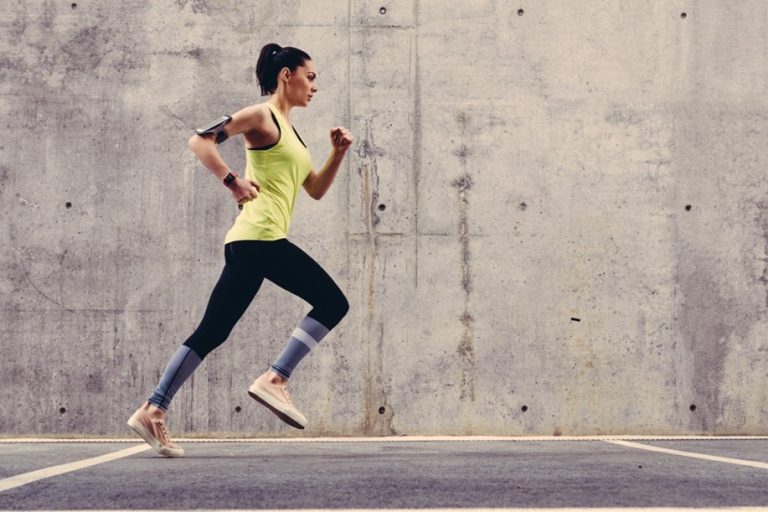 Finally, the most important of all keto-related inquiries: do ketogenic diets really work?
Finally, the most important of all keto-related inquiries: do ketogenic diets really work?
To sum up this essay, ketogenic diets can and should help you achieve your weight reduction objectives if they are followed appropriately. However, because of the stringent dietary restrictions and the time and effort required to prepare, schedule, and measure each meal, they may be more effective for certain people than others.
Your body will be more likely to enter ketosis and benefit from the many advantages we described earlier if you can maintain a daily carb consumption of less than 50 grams per day. You will notice more and more effects as your body becomes fat-adapted and more effective at burning fat. It’s possible to get even better results when you combine ketosis with additional weight-loss methods like intermittent fasting, calorie tracking, and well fuelled exercise sessions.

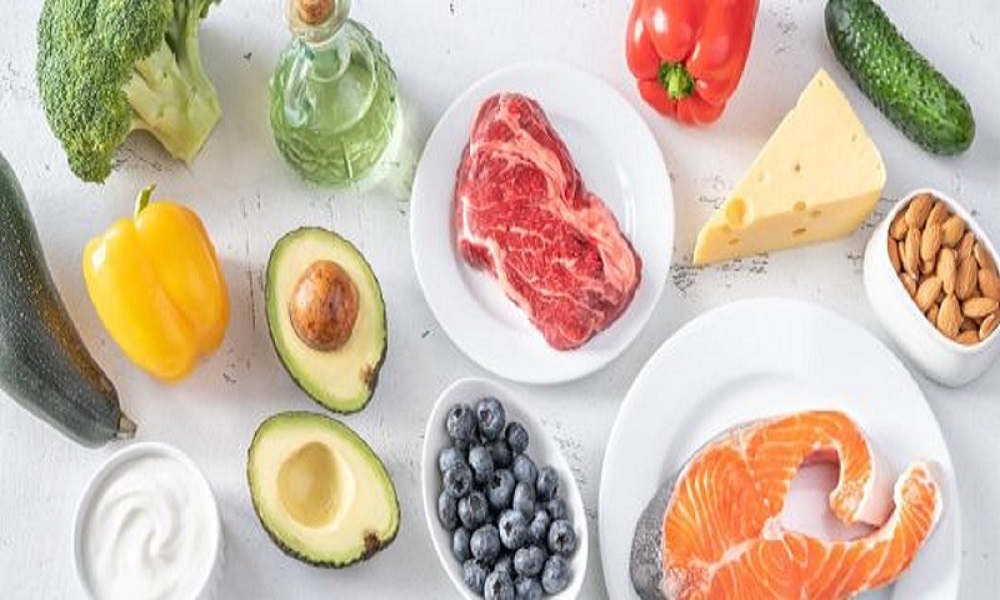
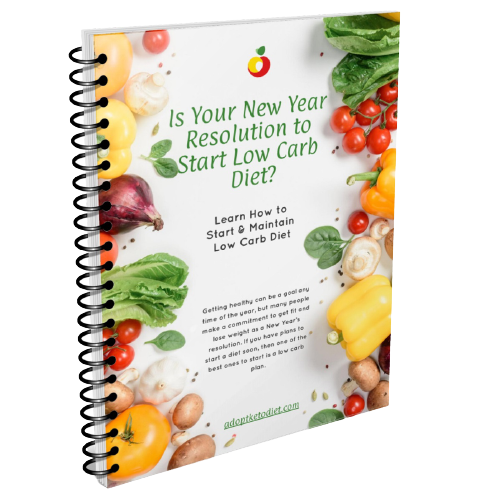

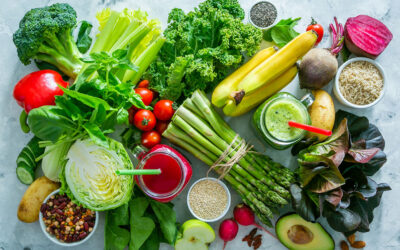
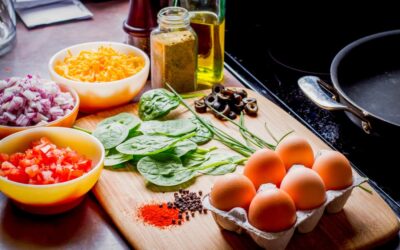
0 Comments